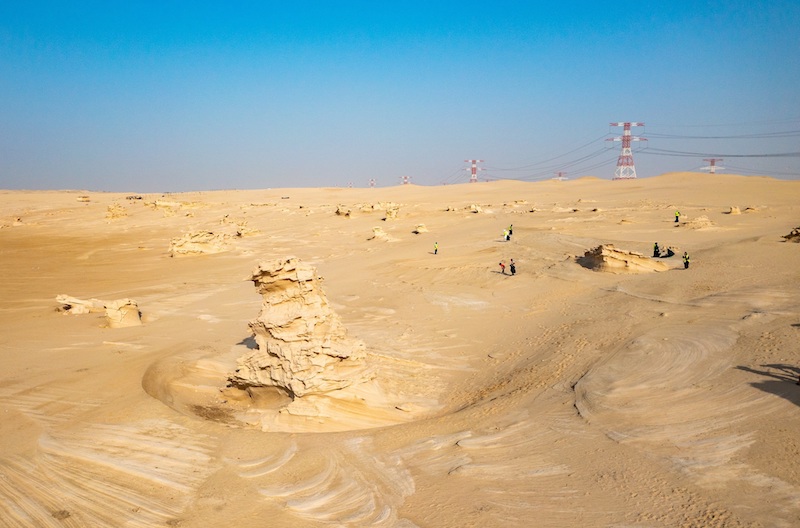How you can help the EAD protect Al Wathba Fossil Dunes
These natural wonders are under threat from human activity…
There is no debating the haunting natural beauty of Abu Dhabi’s breathtaking Fossil Dunes. These naturally occurring monoliths are jutting, jagged reminders of the emirate’s storied geological past.
But they are also fragile and whilst intrepid visitors to their densest grouping sites have, in the past, enjoyed the freedom to explore the location without restriction, there have been incidences of damage to the dunes, and accumulations of waste.
In response, the Environment Agency – Abu Dhabi (EAD) has developed plans to enhance the site, ensuring its preservation for future generations.
View this post on Instagram
Talking about the conservation effort, Her Excellency Dr. Sheikha Salem Al Dhaheri, EAD’s Secretary-General said: “A team consisting of biodiversity experts and a number of engineers in EAD implemented more than 20 evaluation visits to the site over the past three months, with the aim of developing a comprehensive plan to protect the site.”
“[The] EAD also held a series of consultations with the concerned entities and other key stakeholders to further protect the site and ensuring its sustainability.”
Dangerous liaisons
The list of human interactions that could potentially damage the dunes can neatly assemble under the subheading of ‘common sense’. Do not climb on the dunes, acts of vandalism such as name carving and graffiti are completely unacceptable, and if you have a picnic in the vicinity, clean up after yourselves.

On Patrol
The EAD has already started patrolling the locale, in order to prevent potential infractions. Ahmed Al-Hashemi, EAD’s Acting Executive Director of the Terrestrial and Marine Biodiversity said: “An inspection and control team consisting of four environmental inspectors implemented approximately 1,400 hours of inspection tours in the morning and evening periods, at a rate of 16 hours per day during the first quarter of this year.”
Wasting away
A key element of the project has been raising visitor awareness about the need to take accountability and act responsibly around the dunes.
Temporary sign boards have been installed and multiple social media campaigns have been run. Volunteers have been gathered for clean-up missions, the last two of which resulted in the collection of 300kg of waste.
The EAD has collaborated with Abu Dhabi Center for Waste Management (Tadweer) to organise and implement waste disposal containers. But can we just add, if you visit, fully intend to dispose of your waste there, but find the containers are full, please take your rubbish home or to the next empty bin.
View this post on Instagram
You might also like
What are the Fossil Dunes and how were they formed?
There are in fact scattered examples of these types of dune skeleton across the UAE, but they only now exist in any significant number, at this particular site, South of the Al Wathba Wetland Reserve.
As to what they are, please allow us a moment to slip on our geography teacher blazer, the one with suede elbow pads.
The technical name for the structres is ‘lithified sand dunes’, these are cross-bedded dune sands, formed at their core by ground water depositing layers of calcium carbonate (chalk) and other similar salts during the glacial period.
The enchanting formations found in the Al Wathba area take their shape from specific patterns of water and importantly wind erosion.
Image: Getty/Provided
